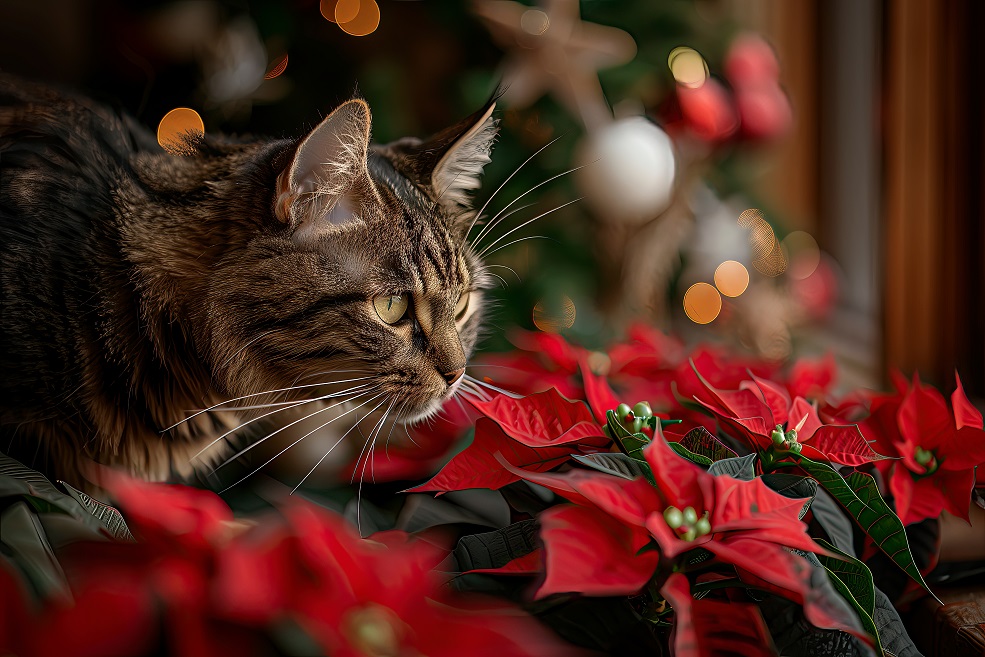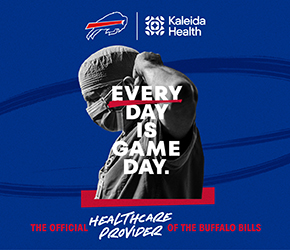Holiday Hazards: Keeping Pets Safe This Season

By the Veterinary Society of Western New York
The holiday season brings joy, gatherings, and festive activity, but also introduces hidden pet hazards. Veterinarians across Western New York observe a predictable increase in emergency visits during the months of November and December. From tempting foods to hazardous décor, the holidays can pose significant risks to our four-legged family members.
Holiday Foods: Delicious for You, Dangerous for Pets.
Holiday favorites, such as chocolate, grapes, raisins, onions, garlic, xylitol-sweetened treats, and alcohol, can be toxic to pets. Fatty foods like turkey skin, gravy, ham, and cheese can cause life-threatening pancreatitis. Even small amounts can lead to vomiting, abdominal pain, or worse. Bones—especially cooked poultry bones—can splinter and cause choking or internal injuries. Do not give pets turkey, ham, or rib bones, no matter how much they beg. Remind guests not to slip treats under the table, and keep trash securely sealed.
Festive Decorations: Pretty but Risky.
Tinsel and ribbon can be attractive to pets, especially cats, and may cause intestinal blockages if ingested. Broken glass ornaments can cut paws or mouths, and snow globes may contain toxic antifreeze. Battery-operated decorations are hazardous if chewed, as alkaline batteries can cause burns to the mouth or esophagus. Also, ensure the Christmas tree is securely in place, as curious pets may topple it, leading to injuries from falling branches or broken ornaments. Cover the water at the base of live trees, as it often contains fertilizers and bacteria that can harm pets.
Plants that can poison pets.
Poinsettias, although less toxic than once thought, can cause mouth irritation and stomach upset. Mistletoe and holly are more dangerous and can lead to vomiting, diarrhea, or heart problems. Lilies are extremely hazardous to cats—ingestion of even small amounts can cause kidney failure. Keep all seasonal plants out of pets’ reach, or opt for pet-safe alternatives.
Holiday Lights and Electrical Cords.
String lights add magic to the season, but they can also cause burns or electrical shocks if chewed. Keep cords hidden or protected, and turn off lights when pets are unsupervised. Consider using cord covers or bitter-tasting deterrent sprays.
Visitors, Noise, and Routine Changes.
The holidays often bring extra visitors, noise, and schedule changes—all of which can stress pets. A fearful dog may bolt out an open door, or a stressed cat may hide for days. Create a quiet space where your pet can retreat during gatherings. Ensure your pet’s collar has updated ID tags and that the microchip information is current.
Gifts, wrapping supplies, and toy hazards.
Small toys, batteries, ribbons, and wrapping materials can pose choking hazards or cause intestinal blockages. Clean up wrapping supplies quickly, and keep gifts containing food out of children’s reach.
The holidays should be a time of comfort—not a trip to the emergency vet. By staying aware of seasonal hazards, families can protect their pets and enjoy a safe, joyful season together. For more pet-safety tips or local veterinary resources, visit the Veterinary Society of Western New York.











